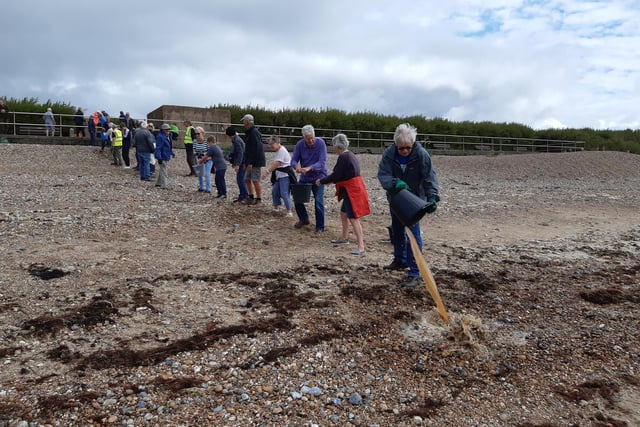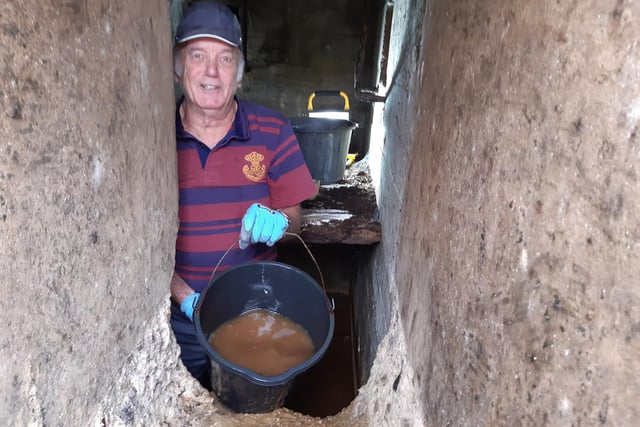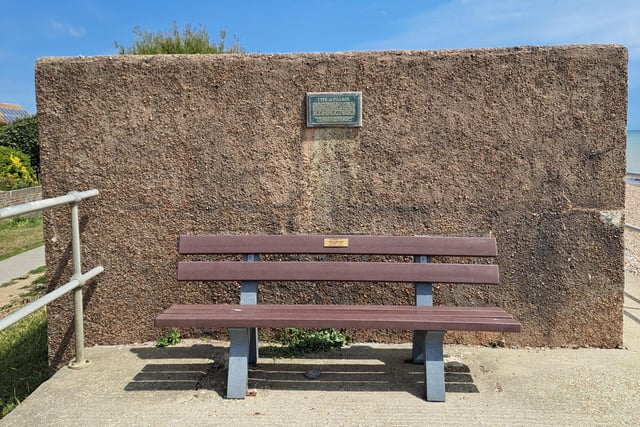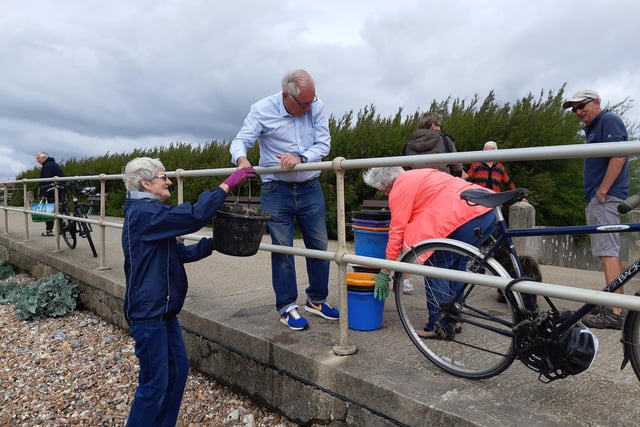Ferring History Group and Ferring Conservation Group are working together, with the help of Ferring Parish Council, to make the pillbox safe and clean. A team of people, including Worthing West MP Sir Peter Bottomley and Arun district councillors Mark Turner and Lesley-Anne Lloyd, formed a bucket chain from Patterson’s Walk to the sea on Friday to clear the nine inches of water covering the floor of the pillbox.
Ed Miller said: "The first step was to get the steel entrance door open and new locks fitted. The next step was to take out the water. We couldn't pump it out, so we had to have a bucket chain of volunteers to take the water up on to the shingle and down to the sea.
"We know this site is of great interest to residents as part of the defences against invasion, and the history group has given talks at the site to local school pupils but we have not previously been able to open it up and make it safe and clean enough for them to see inside.
"Primary school teachers are very keen on these visits because life in Britain during World War Two is on the National Curriculum for year-six pupils. We tell the children about the whole range of defences, from Admiralty scaffolding to minefields, barbed wire and concrete blocks.
"Now we want to show them the task that soldiers had in keeping watch for the enemy for hours on end, in very uncomfortable conditions, and, if the invaders did come, in fighting them on the beaches with machine-gun fire. We want to open up the bricked-up embrasures where the guns were mounted and put in some vandal-proof glass or Perspex so that visitors can see what the soldiers were seeing."
Pete Coe, a former Royal Engineers officer, is leading the research and practical work needed on the project, and Martin Mace, author of Frontline Sussex: Defence Lines of West Sussex 1939-1945, was helping with the bail out and further research.
The pillbox was built in 1941 as part of the beach defences known as the coastal crust, put up by the Royal Engineers to frustrate an expected invasion. Ferring was right in the middle of the West Sussex section of the Germans’ invasion plans, code named Operation Sea Lion.
A Worthing Borough Council survey in October 1945 revealed there were 27 pillboxes and gun emplacements along the four-mile stretch of seafront from Brougham Road in the east to Sea Lane, Goring, in the west. After the war, nearly all of the coastal defences were demolished and cleared away, so the Ferring pillbox and another at Lancing are the only two coastal defence installations in West Sussex to survive.

1. Ferring pillbox
A bucket chain of volunteers from Ferring History Group and Ferring Conservation Group, including Worthing West MP Sir Peter Bottomley, form a bucket chain to bail out nine inches of water from the Ferring pillbox Photo: Elaine Hammond / Sussex World

2. Ferring pillbox
A bucket chain of volunteers from Ferring History Group and Ferring Conservation Group, including Worthing West MP Sir Peter Bottomley, form a bucket chain to bail out nine inches of water from the Ferring pillbox Photo: Elaine Hammond / Sussex World

3. Ferring pillbox
The Type 26 pillbox at Patterson’s Walk, Ferring, was built in 1941 as part of a network of coastal defences and it is one of only a few remaining examples, a structure of character and historical importance Photo: Pete Coe / Submitted

4. Ferring pillbox
A bucket chain of volunteers from Ferring History Group and Ferring Conservation Group, including Worthing West MP Sir Peter Bottomley, form a bucket chain to bail out nine inches of water from the Ferring pillbox Photo: Elaine Hammond / Sussex World